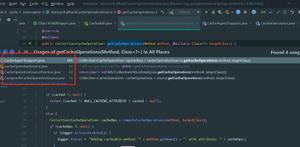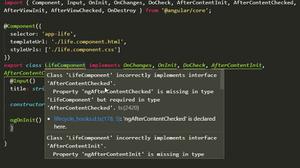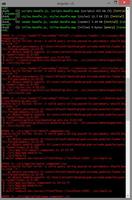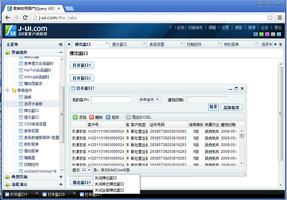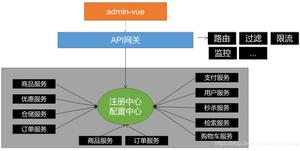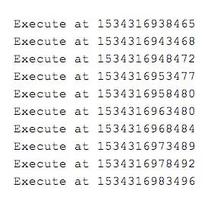制作前端和后端(Angular 2和Spring)Maven多模块项目
如何使用Spring后端和Angular2前端创建Maven多模块项目?分别使用spring
initializr(https://start.spring.io)和angular
cli似乎很简单,但是如何将其组织为一个包含链接但分开的pom文件的多模块Maven项目?我应以什么值以及按什么顺序创建和初始化这些值?如果可以简化事情,我可以使用Intellij
IDEA,但我对CMD也很好(我在Windows上)。
我在此找到的唯一教程是在这里:https : //blog.jdriven.com/2016/12/angular2-spring-boot-getting-
started/,但是这个人使用一些自写的“ frontend-maven-
plugin”我不想。有人可以解释这些步骤,还是可以将我链接到一个不使用第三方资源而是仅清理Spring和Angular2的教程?
编辑:当我发布此问题时,WebDevelopment在很大程度上对我来说是新的。下面的解决方案从一开始就起作用,但是为了获得更好的可扩展性,我们决定稍后再进行单独的项目:一个包含多个Angular应用程序和许多FE-
lib的FE项目(为此请查看NRWL的NX)。每个BE微服务都有一个项目,每个项目都可以在CI管道中单独部署。Google本身对所有FE和BE都采用了一个项目的方法,但是它们确实有特殊要求(所有库必须在最新版本中相互协作),并且它们使用ABC堆栈(Angular
+ Bazel +
Closure)堆栈,尚未完全向公众提供,但值得关注:https
:
//github.com/angular/angular/issues/19058
回答:
推荐的构建Angular 2应用程序的方法是使用Angular CLI工具。同样,当您处理Java EE项目时,通常将Maven用作构建工具。
为了充分利用这两方面的优势,您可以开发一个多模块项目,如您所愿。
如果您愿意,请克隆此示例:
git clone https://github.com/prashantpro/ng-
jee.git
鉴于前端/ UI项目将是Angular 2应用程序。后端项目可以是Spring或纯Java EE应用程序(任何Web应用程序)。
我们要获取Angular 2输出( 目录),并将其映射到UI部分的Web应用程序项目中。
这是没有任何花哨的第三方插件即可实现的方法。让我们以这个多模块项目结构为例:
(这是您的父POM项目)
.├── pom.xml
├── ngdemo
│ ├── pom.xml --- maven pom for angular module
│ ├── dist --- This will be Angular output
│ ├── e2e
│ ├── karma.conf.js
│ ├── node_modules
│ ├── package.json
│ ├── protractor.conf.js
│ ├── README.md
│ ├── src
│ ├── tsconfig.json
│ └── tslint.json
└── webdemo
├── pom.xml
└── src
父pom.xml需要列出两个模块。第 模块应该是UI(Angular 2)模块,然后是Java / Spring模块。
*
<packaging>pom</packaging><modules>
<module>ngdemo</module>
<module>webdemo</module>
</modules>
接下来,如果您已使用如下CLI创建了角度应用程序:
ng new ngdemo
然后,您需要将pom.xml放在同一目录 具有以下构建插件:(这将构建Angular CLI项目并在其
文件夹中生成输出。
<build> <plugins>
<plugin>
<groupId>org.apache.maven.plugins</groupId>
<artifactId>maven-clean-plugin</artifactId>
<version>3.0.0</version>
<configuration>
<failOnError>false</failOnError>
<filesets>
<fileset>
<directory>.</directory>
<includes>
<include>dist/**/*.*</include>
</includes>
<followSymlinks>false</followSymlinks>
</fileset>
</filesets>
</configuration>
</plugin>
<plugin>
<groupId>org.codehaus.mojo</groupId>
<artifactId>exec-maven-plugin</artifactId>
<version>1.5.0</version>
<executions>
<execution>
<id>angular-cli build</id>
<configuration>
<workingDirectory>.</workingDirectory>
<executable>ng</executable>
<arguments>
<argument>build</argument>
<argument>--prod</argument>
<argument>--base-href</argument>
<argument>"/ngdemo/"</argument>
</arguments>
</configuration>
<phase>generate-resources</phase>
<goals>
<goal>exec</goal>
</goals>
</execution>
</executions>
</plugin>
</plugins>
</build>
难题的最后一部分是引用此 文件夹,以便我们可以将输出复制到我们的WAR文件中。
因此,这是需要在 *
<build> <resources>
<resource>
<directory>src/main/resources</directory>
</resource>
</resources>
<plugins>
<plugin>
<groupId>org.apache.maven.plugins</groupId>
<artifactId>maven-war-plugin</artifactId>
<version>2.3</version>
<configuration>
<failOnMissingWebXml>false</failOnMissingWebXml>
<webResources>
<resource>
<!-- this is relative to the pom.xml directory -->
<directory>../ngdemo/dist/</directory>
</resource>
</webResources>
</configuration>
</plugin>
</plugins>
</build>
现在,如果您从父目录 *
mvn clean install
然后您会看到,它首先构建Angular项目,然后构建Web Project,同时为后者构建,还将Angular dist内容复制到Web项目根目录中。
因此,您将在WAR / Web项目目标目录中获得如下所示的内容:
/ng-jee/webdemo/target/webdemo-1.0-SNAPSHOT.war
.├── favicon.ico
├── index.html
├── inline.d72284a6a83444350a39.bundle.js
├── main.e088c8ce83e51568eb21.bundle.js
├── META-INF
├── polyfills.f52c146b4f7d1751829e.bundle.js
├── styles.d41d8cd98f00b204e980.bundle.css
├── vendor.fb5e0f38fc8dca20e0ec.bundle.js
└── WEB-INF
└── classes
而已。我将在这些方面中的一些方面进行一系列研究,在这里更多地介绍Angular和JEE
直到这希望对您有所帮助!
以上是 制作前端和后端(Angular 2和Spring)Maven多模块项目 的全部内容, 来源链接: utcz.com/qa/411705.html



